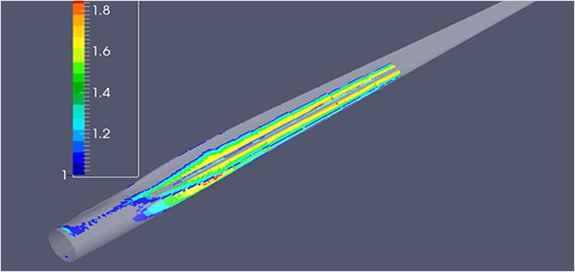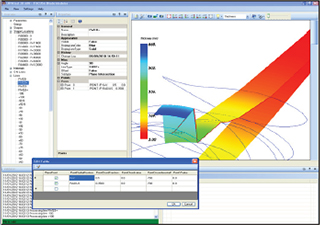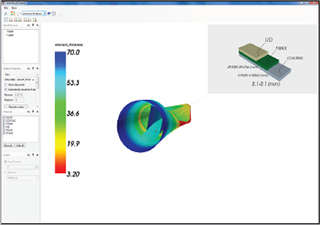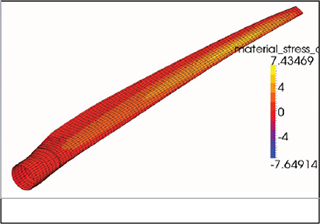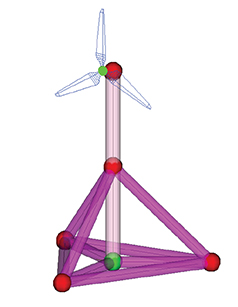FOCUS 6
FOCUS6 The Integrated Modular Wind turbine Design Tool
FOCUS6는 WMC에서 개발한 풍력 터빈 시스템 설계 및 블레이드 설계용 소프트웨어입니다. 로터 블레이드와 같은 풍력 터빈과 구성요소를 설계하기 위한 통합 모듈 Tool로, 약 20년 동안 풍력 터빈 OEM, 블레이드 설계 엔지니어링 회사, 연구소 및 대학교에 의해 사용되었습니다. 풍력 터빈 설계와 블레이드 및 서포트 구조 설계를 통합하는 기능을 자랑합니다.
FOCUS6의 주요 특징들
- Wind turbine design
- Rotor pre-design
- Detailed blade design with interactive modeler
- Load set calculation according to international
- standards (IEC, GL, DNV)
- Design load sets calculated and blade structuralt
- analyses results are accepted for certification
- Fatigue and strength analysis based on
- stress/strain timeseries

- Multi-user environment and tracking of all
- design changes
- In-house software of end-users can be integrated in
- theuser interface
- World wide used by main players in industry
- Open architecture
- Support of external formats
- Graphical analysis of results
- Integrated help system
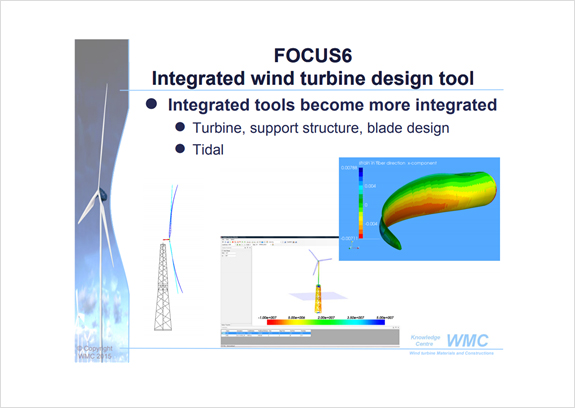
Flow Chart of Focus6

블레이드 설계 (Blade design)
FOCUS has a unique tool to model interactively rotor blades in detail.
While defining the blade step-by-step, the 3D interactive visualization gives direct feedback of the design changes.
-
Material properties, layer thicknesses and layer sequences can be inspected.
- - This makes blade modeling in FOCUS user-friendly, with less risk of errors in user input.
- - The materials are assigned to layers that are put into the blade model. ted module is available.
-
The aeroelastic performance of rotor blades can be determined without the need of a full turbine model or a detailed blade design.
-
The theoretical basis is the beam bending theory, in which torsional deformation and transverse shear flexibility as well as many aerodynamic and structural dynamic coupling terms for bending and torsion dynamics are included.
-
Material properties, layer thicknesses and layer sequences can be inspected.
로터 블레이드 구조해석 (Rotor blade structural analysis)
Advanced beam model approach is used for the following structural analysis:
- Strain and stress based static strength evaluation
- Fatigue analyses in time domain
- Buckling analyses
- Modal analyses
- Tip deflection calculations
- For detailed analyses, a shell element based FEM solver is available.
- All results can be presented both in tabular and graphical form.
로터 블레이드 공력 및 공탄성 (Pre-design ; Aerodynamic and aeroelastic pre-design)
For the aeroelastic pre-design of rotor blades a dedica
- Rotor pre-design
- Detailed blade design with interactive modeler
- Load set calculation according to international standards (IEC, GL, DNV)
- Design load sets calculated and blade structural analyses results are accepted for certification
- Fatigue and strength analysis based on stress/strain timeseries
- Multi-user environment and tracking of all design changes
- In-house software of end-users can be integrated in theuser interface
- World wide used by main players in industry
- Open architecture
- Support of external formats
- Graphical analysis of results
- Integrated help system
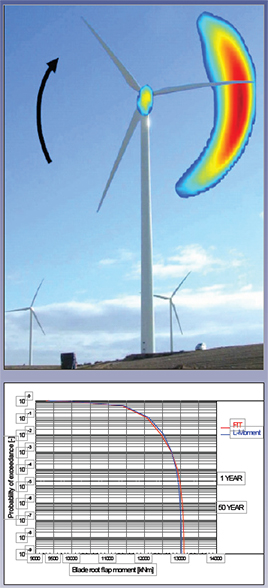
풍력 터빈 시스템 설계 (Wind turbine design)
- The module Aeroelasticity II calculates the combined aerodynamic and structural dynamic behavior of a wind turbine in time domain.
- The build-in tower model gives a detailed and well-validated dynamic response of the tower including all mutual interactions with the turbine model up to the aerodynamics of the rotor.
- The rotor aerodynamics are solved on basis of the engineering BEM theory of which the sub-models(for tip-loss, tangential induction, blade-tower interaction, oblique inflow effects, rotational effects) are combined on a physical basis.
- Design load sets calculated and blade structural analyses results are accepted for certification
- The rotor aerodynamics are solved on basis of the engineering BEM theory of which the sub-models(for tip-loss, tangential induction, blade-tower interaction, oblique inflow effects, rotational effects) are combined on a physical basis.
- A built-in PD controller is provided that includes rotor speed filtering and peak-shaving strategy. In addition, dedicated controllers can be linked.
- A tool is provided that generates the input for load cases that are required for IEC or GL load set calculations.
- For this purpose models are available to simulate faulted conditions and emergency situations
- The results are accepted for certification by GL and DNV. The results are accepted for certification by GL and DNV.
- In order to reduce the total turnaround time of load set calculations, load cases can be calculated in parallel on computers with multi-core CPUs.
- Using the job management system, load cases can be calculated in parallel on multiple computers.
- FOCUS6 supports submitting jobs to a dedicated computer cluster for further reduction in turnaround.
시스템 기본 사양 (System requirements)
- Processor : Pentium IV 3GHz, Pentium Dual Core 2.2 GHz
- Memory : 2048 MB
- Hard disk : 200 GB - 7200 rpm
- Graphics card : 128 MB with OpenGL 3D support
- Operating system : Windows XP or Windows Vista
- Data base : PostgreSQL 8.2 or later
- For a multi-user environment it is recommended to install the data base on a separated server (Windows or Linux).


